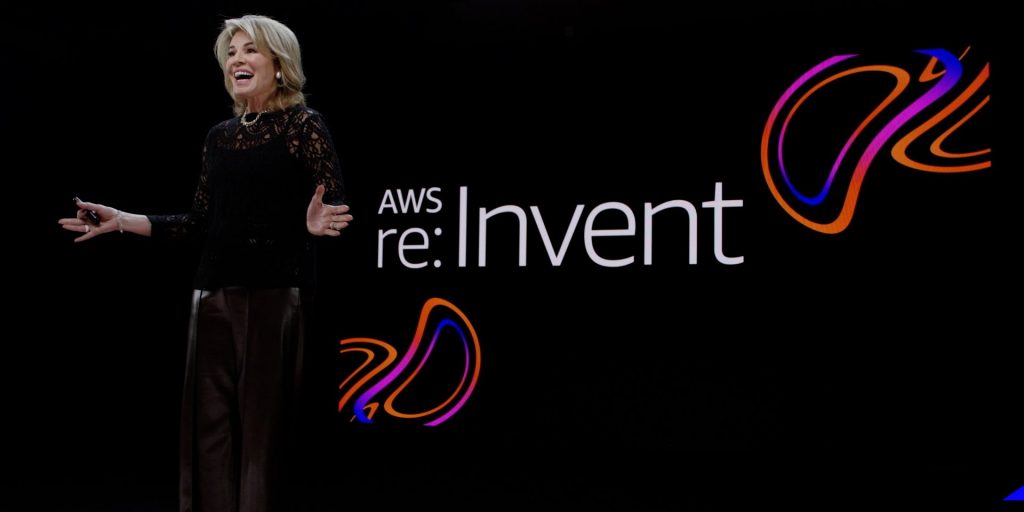AWS Public Sector Blog
Category: Thought Leadership
From complexity to clarity: The strategic value of AWS—What you missed at re:Invent 2020
At re:Invent 2020, Teresa Carlson, vice president and leader of AWS public sector and industry business units, shared stories of how cloud technology has proven critical for organizations to move fast and respond to a new reality shaped by COVID-19. Teresa also welcomed customers UK Biobank, Capella Space, and Wefarm to share their own experiences with solving some of the world’s most pressing challenges using the cloud. Here are 10 key takeaways that show what’s next for the public sector.
Keeping “mission critical” critical but simple: 5 public sector partners announcements at AWS re:Invent 2020
At AWS, we are mission focused. A mission is a purpose—supported by but not driven by IT. How can the AWS Partner Network (APN) help public sector partners and their customers meet their missions? No matter where you are in your journey to cloud adoption and IT modernization—from getting started, to easing the adoption of technology, to planning to take the solution to market, to growing beyond storage and compute, to renewing and scale—APN and its programs and initiatives can help. During my leadership session at AWS re:Invent 2020, I shared new and noteworthy AWS Public Sector Partner programs available to help partners keep their focus on their mission-critical work while also keeping it simple—and I shared some partner successes along the way.
The COVID-19 infodemic: How Novetta uses machine learning to analyze unproven narratives on social media
The COVID-19 pandemic is driving a parallel “infodemic”: the rapid spread of competing and often harmful narratives about the virus. Social media plays a central role in this infodemic, serving as a forum for the spread and evolution of theories and beliefs with origins in broadcast, print, online news, blogs, and other digital arenas. As the COVID-19 infodemic grew, Novetta used AWS to create Rapid Narrative Analysis (RNA), a solution that achieves accuracy by using human expertise at critical stages of analysis while using machine learning (ML) models to rapidly diagnose the severity of the spread of key narratives at a speed needed to take effective action.
What’s next for Europe’s data revolution? AWS joins the GAIA-X initiative
Using data for commercial advantage and improved citizen services is at the heart of Europe’s next wave of initiatives. GAIA-X is an initiative that aims to bring together representatives from business, science, and politics to help define standards for the next generation of data infrastructure, which includes an open transparent and secure digital ecosystem, where data and services can be made available, collated, and shared in an environment of trust. AWS has participated in multiple GAIA-X technical working groups and has actively supported the initiative from its beginning. We’re here to help our European customers and partners accelerate cloud-driven innovation in Europe—to compete at home and globally. As we announce our membership of GAIA-X, it’s important to understand what’s driving our involvement and support.
A pragmatic approach to RPO zero
Nobody wants to lose data—and setting a Recovery Point Objective (RPO) to zero makes this intent clear. Customers with government mission-critical systems often need to meet this requirement, since any amount of data loss will cause harm. RPO covers both resilience and disaster recovery—everything from the loss of an individual physical disk to an entire data center. Existing systems support RPO zero through a combination of architecture patterns (including resilient messaging) and on-premises legacy databases. Frequently interpreted as a database or storage requirement, providing for RPO zero requires thinking about the entire system. To do so, you can use AWS services and architecture patterns, which provide resilience to failure with clustering, auto scaling, and failover across multiple data centers within one region.
Building tech skills and jobs in America’s rural communities
According to the McKinsey Global Institute, by 2030 most of the United States’s economic and employment growth will be generated by 30 percent of the population, living and working in 25 mega regions. In the high-growth tech sector, employers cannot find enough urban employees to fill available jobs. Meanwhile, nearly 25 percent of Americans live in rural areas characterized by shrinking employment in traditional industries such as manufacturing and agriculture. Is migration from rural areas to mega-cities the only solution? Do rural workers have the skills needed to transition to tech sector jobs? In this Q&A, Brendan Walsh of the 1901 Group talks to the AWS Institute about opportunities to build cloud technology skills and employment in rural communities in the United States. Brendan dispels some of the myths about barriers to rural skill building.
How the cloud can enable enhanced risk management and innovation
In an environment that is constantly changing due to COVID-19, increased competition, ever-evolving customer sentiments, and emerging technologies, financial services organizations are feeling the pressure to innovate. At the same time, the expectations for an effective risk management program have also increased in response to cyber threats, regulatory pressures, market fluctuations, and increasingly sophisticated financial criminals. Advancements in cloud computing are enabling organizations to improve their risk-management capabilities to get ahead of issues while continuing to deliver on and evolve their business strategy. Learn how the cloud empowers organizations to innovate and effectively manage risk—two enterprises that are often perceived as contradictory but can actually be complimentary.
Remote workforce, web portal, and DevSecOps: Three focus areas for cybersecurity
According to the 2020 Deloitte-NASCIO Cybersecurity Study for state governments, 54 percent of states are not confident in their ability to protect emerging technology. Traditional cybersecurity approaches can result in singularly focused solutions that don’t provide holistic protection. It can also inhibit an organizations’ ability to monitor and respond to security threats in real time. As more organizations shift to cloud-based workloads, security mechanisms and components need to be developed and integrated using a Security by Design (SbD) approach. Our AWS Partners have developed pre-configured security solutions, which allow customers to deploy applications using SbD strategies and also use AWS security solutions to ensure continuous security alignment.
Mission: Providing business continuity for the future of work
Over the past few months, one of the biggest challenges for organizations and employees alike has been the sudden transition to remote work. But we have learned that remote work works when the right technology and leadership come together. Check out some impactful stories that demonstrate how governments have gone above and beyond using the cloud to quickly adapt to this new environment and shift away from the status quo.
New IDC whitepaper released: How government agencies meet security and compliance requirements with the cloud
A new IDC whitepaper, sponsored by AWS, “How Government Agencies Meet Security and Compliance Requirements in the Cloud” examines why federal agencies are moving more systems and information to the cloud as a launching point for agency-wide IT modernization. The paper shares executive, legislative, and other government-wide initiatives influencing agencies to accelerate their cloud adoption plans, risks IT leaders face by delaying cloud migrations, and how secure, compliant cloud environments help agencies achieve compliance and security for their sensitive workloads.









